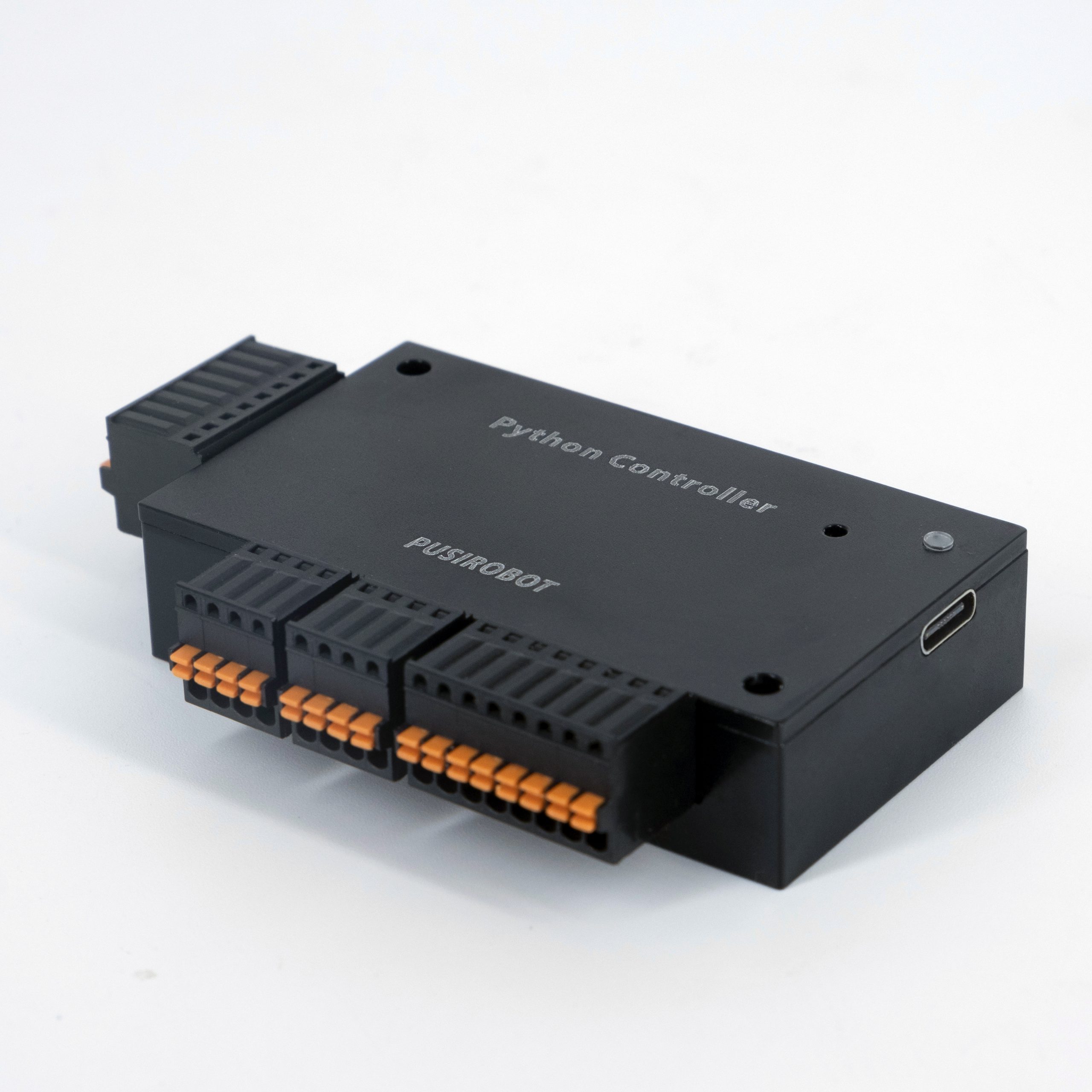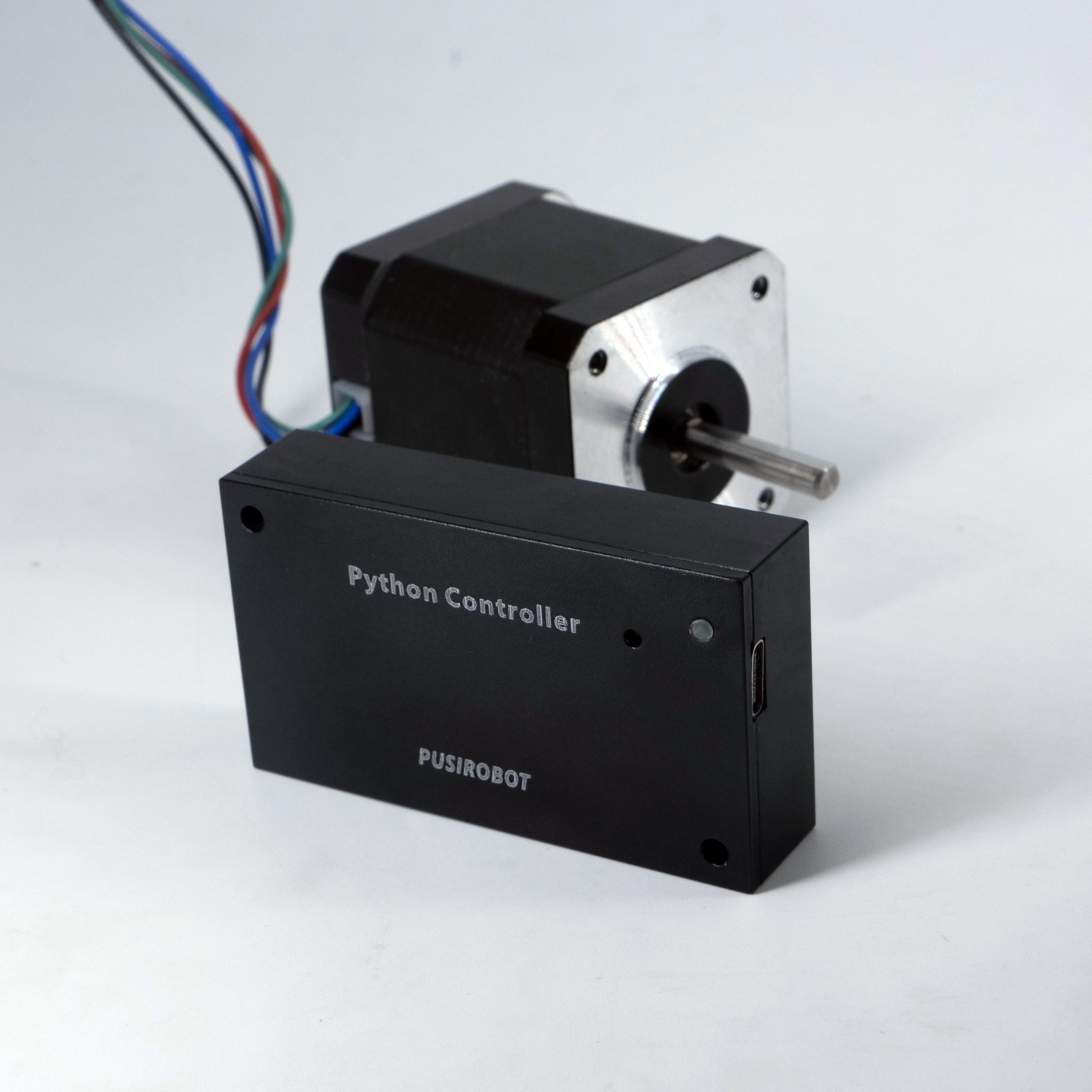- Welcome to Pulse Robot
- +86-23-63207381
- +8613677602178
- sales@pusirobot.com
Python Controller: Smarter and Simpler Solutions for Your Projects
In today’s project development landscape, whether for undergraduate final projects, graduate research, or small-scale equipment control applications, developers seek a powerful yet user-friendly controller. The Python Controller is precisely such a versatile and easy-to-use tool!
As a highly flexible and capable hardware module, the Python Controller is suitable for a wide range of projects and plays multiple roles in control system architectures. Specifically, it can act as part of a host control system, managing slave devices via CAN or RS485 buses, or serve as an intermediary device for IO control, PWM output, and more, providing efficient system coordination. These features make the Python Controller a viable alternative to PLCs or industrial control computers while offering unmatched convenience and ease of use, significantly accelerating project implementation.

Let's analyze some key features:
As a Host Device
The Python Controller allows seamless control of downstream devices via Python programming. This not only simplifies the development process but also delivers exceptional flexibility and scalability. Its primary functionalities include:
- Command Transmission: Using Python scripts, the host device can send specific commands to downstream devices. These commands range from basic operations like start, stop, accelerate, or decelerate, to complex parameter settings and control logic.
- Data Collection and Processing: The host device gathers data from downstream devices for analysis and management, enabling real-time status monitoring and recording of key parameter changes. Python’s powerful data processing capabilities ensure efficient handling of large datasets.
- Logical Control: Python Controller executes complex control algorithms, automating sequences of actions based on predefined conditions. For example, in an automated production line, it can adjust equipment operations based on sensor inputs, enhancing efficiency.
- Remote Monitoring and Management: Through network connectivity, the Python Controller supports remote system access for device status queries, fault diagnostics, and remote control, enabling robust and flexible management.
As an Intermediary Device
The Python Controller integrates a variety of practical interfaces to meet diverse application requirements, from simple control tasks to complex systems:
- 1 CAN Channel: Facilitates real-time control and communication, ideal for seamless integration with automotive or industrial systems.
- 2 RS485 Channels: Enables stable, long-distance, interference-resistant communication.
- 2 DC Motor or 1 Stepper Motor Control Channels: Supports versatile motor control schemes for small devices or experimental setups.
- 1 Analog Input Interface: Allows real-time sensor data acquisition for precise monitoring of physical parameters.
- 1 SPI Interface: Enables easy connection with external sensors or storage devices for flexible functionality expansion.
- 2 GPIO Interfaces: Freely configurable for input or output, simplifying logical control of peripheral devices.
- 2 PWM Output Interfaces: Ensures precise pulse-width modulation for advanced control applications.
Each function is accompanied by example programs, offering flexibility and robust scalability. Whether managing single devices or complex multi-device systems, the Python Controller handles it all with ease.

Exceptional Usability
Beyond its rich features, the Python Controller is remarkably simple to operate. Each submodule comes with control routines, and Python programming makes executing or modifying programs straightforward. No compilation is needed—just drag the Python script into a USB drive to get started. This ease of use minimizes programming barriers, allowing users to implement control logic with just a few simple commands.
With excellent compatibility and the ability to integrate into various development environments, the Python Controller is an ideal choice for graduation projects, research topics, and real-world device control applications. It makes project design more straightforward and efficient, empowering you to achieve more with less effort.
